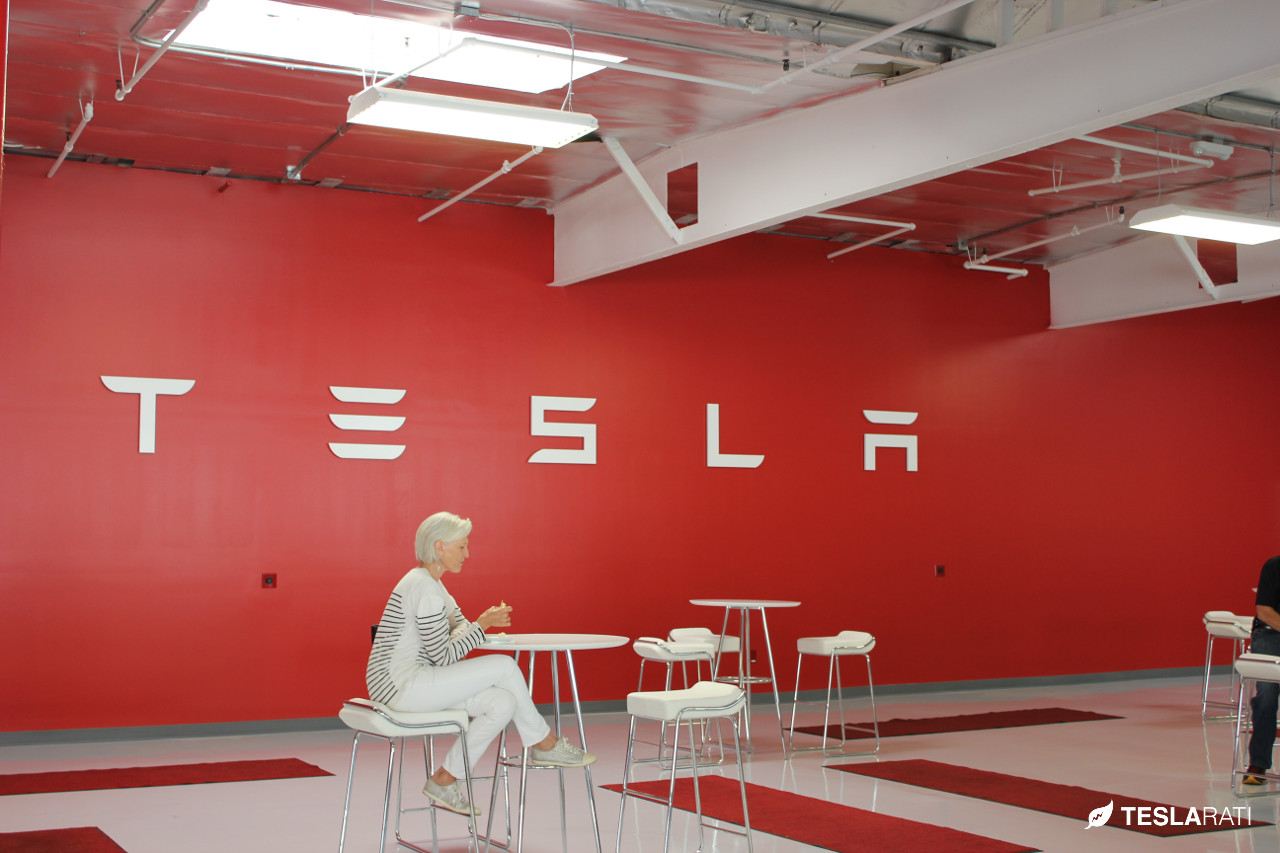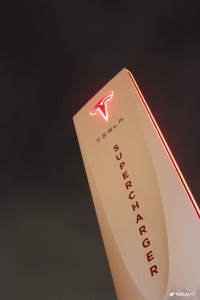News
Is Tesla chipping away at dealership resistance?

 After Arizona, then Texas, and finally New Jersey forbidding Tesla Motors from selling its electric vehicle (EV) Model S directly to consumers, was it one too many that will push the company to bulldoze over discarded business models standing in its way?
After Arizona, then Texas, and finally New Jersey forbidding Tesla Motors from selling its electric vehicle (EV) Model S directly to consumers, was it one too many that will push the company to bulldoze over discarded business models standing in its way?
Tesla we love you, let us count the ways…
There are many reasons why people love Tesla Motors, and particularly Elon Musk’s business strategy acumen. There are also many reasons why many hate it. It is both disruptive and paves the way to a future that frightens those reluctant to change their old business models. Tesla Motors has strong entrepreneuralship DNA, and what entrepreneurs do best is to ask simple questions: “What do we need” or what is needed now. Unfortunately, established corporations don’t do that because their products, or services, aren’t really that needed anymore and people still flock to them. Entrepreneurs and startups are not encumbered by this. They see the bigger picture, and the bigger picture is you, consumer. So what is it you need, and why is Tesla so darn appealing?
One, two, but three is enough!
Elon Musk knows how to work with a company up until the point where it either doesn’t deliver, or asks for too much. At that point, he uses Tesla to make it better. If the first setbacks in Arizona and Texas were a learning curve, was New Jersey the endurance limit for trail blazing Tesla and its mission? The latest Ohio Automobile Dealers Association compromise to allow the electric-car company to operate three stores in the state seem to show that it is. Get the trend here?
The Ohio deal sheds a little more light as to how Tesla will handle the farcical opposition to something everyone wants, choice in how you buy your car. The Ohio deal was negotiated quickly yesterday, voted by an Ohio Senate panel with little to no opposition. What’s next? Elon Musk and Tesla won’t stand idly waiting for the Dealership association to make up its mind how to play with this very disruptive incumbent. It knows it needs to boost its sagging image. Tesla is showing the way, and the problem is that it cuts into its revenue model. The Ohio turn of event shows that politicians and the dealership association are finally taking Tesla seriously, enough to invite them to the table. And that is only the beginning of the precipitation.
Tesla can have its stores at Easton and Cincinnati, and can open a store in Cleveland. However, it cannot open any additional stores. According to Diarmuid O’Connell, Tesla’s vice president for business development: “This is a very good compromise,”… for now.
Does this mean Tesla is softening its approach and becoming diplomatic, or that the Dealership association sees the painting on the wall? Watch out how the next states decide whether a carmaker can sell its cars directly, or not. Make no mistakes, politicians and carmakers are now taking the Tesla Motors’ business models very seriously, at last. NY Gov. Andrew Cuomo and the state’s car dealers show that by bringing Tesla to the table. No matter what, Tesla Motors and Elon Musk will always be the person and company that forced dealerships to review their business models. This serves as a reminder how any startup, in our case Tesla, can remind what America was once associated with, entrepreneurship that answers a dire need.

Elon Musk
Elon Musk and Tesla AI Director share insights after empty driver seat Robotaxi rides
The executives’ unoccupied tests hint at the rapid progress of Tesla’s unsupervised Robotaxi efforts.

Tesla CEO Elon Musk and AI Director Ashok Elluswamy celebrated Christmas Eve by sharing personal experiences with Robotaxi vehicles that had no safety monitor or occupant in the driver’s seat. Musk described the system’s “perfect driving” around Austin, while Elluswamy posted video from the back seat, calling it “an amazing experience.”
The executives’ unoccupied tests hint at the rapid progress of Tesla’s unsupervised Robotaxi efforts.
Elon and Ashok’s firsthand Robotaxi insights
Prior to Musk and the Tesla AI Director’s posts, sightings of unmanned Teslas navigating public roads were widely shared on social media. One such vehicle was spotted in Austin, Texas, which Elon Musk acknowleged by stating that “Testing is underway with no occupants in the car.”
Based on his Christmas Eve post, Musk seemed to have tested an unmanned Tesla himself. “A Tesla with no safety monitor in the car and me sitting in the passenger seat took me all around Austin on Sunday with perfect driving,” Musk wrote in his post.
Elluswamy responded with a 2-minute video showing himself in the rear of an unmanned Tesla. The video featured the vehicle’s empty front seats, as well as its smooth handling through real-world traffic. He captioned his video with the words, “It’s an amazing experience!”
Towards Unsupervised operations
During an xAI Hackathon earlier this month, Elon Musk mentioned that Tesla owed be removing Safety Monitors from its Robotaxis in Austin in just three weeks. “Unsupervised is pretty much solved at this point. So there will be Tesla Robotaxis operating in Austin with no one in them. Not even anyone in the passenger seat in about three weeks,” he said. Musk echoed similar estimates at the 2025 Annual Shareholder Meeting and the Q3 2025 earnings call.
Considering the insights that were posted Musk and Elluswamy, it does appear that Tesla is working hard towards operating its Robotaxis with no safety monitors. This is quite impressive considering that the service was launched just earlier this year.
Elon Musk
Starlink passes 9 million active customers just weeks after hitting 8 million
The milestone highlights the accelerating growth of Starlink, which has now been adding over 20,000 new users per day.

SpaceX’s Starlink satellite internet service has continued its rapid global expansion, surpassing 9 million active customers just weeks after crossing the 8 million mark.
The milestone highlights the accelerating growth of Starlink, which has now been adding over 20,000 new users per day.
9 million customers
In a post on X, SpaceX stated that Starlink now serves over 9 million active users across 155 countries, territories, and markets. The company reached 8 million customers in early November, meaning it added roughly 1 million subscribers in under seven weeks, or about 21,275 new users on average per day.
“Starlink is connecting more than 9M active customers with high-speed internet across 155 countries, territories, and many other markets,” Starlink wrote in a post on its official X account. SpaceX President Gwynne Shotwell also celebrated the milestone on X. “A huge thank you to all of our customers and congrats to the Starlink team for such an incredible product,” she wrote.
That growth rate reflects both rising demand for broadband in underserved regions and Starlink’s expanding satellite constellation, which now includes more than 9,000 low-Earth-orbit satellites designed to deliver high-speed, low-latency internet worldwide.
Starlink’s momentum
Starlink’s momentum has been building up. SpaceX reported 4.6 million Starlink customers in December 2024, followed by 7 million by August 2025, and 8 million customers in November. Independent data also suggests Starlink usage is rising sharply, with Cloudflare reporting that global web traffic from Starlink users more than doubled in 2025, as noted in an Insider report.
Starlink’s momentum is increasingly tied to SpaceX’s broader financial outlook. Elon Musk has said the satellite network is “by far” the company’s largest revenue driver, and reports suggest SpaceX may be positioning itself for an initial public offering as soon as next year, with valuations estimated as high as $1.5 trillion. Musk has also suggested in the past that Starlink could have its own IPO in the future.
News
NVIDIA Director of Robotics: Tesla FSD v14 is the first AI to pass the “Physical Turing Test”
After testing FSD v14, Fan stated that his experience with FSD felt magical at first, but it soon started to feel like a routine.

NVIDIA Director of Robotics Jim Fan has praised Tesla’s Full Self-Driving (Supervised) v14 as the first AI to pass what he described as a “Physical Turing Test.”
After testing FSD v14, Fan stated that his experience with FSD felt magical at first, but it soon started to feel like a routine. And just like smartphones today, removing it now would “actively hurt.”
Jim Fan’s hands-on FSD v14 impressions
Fan, a leading researcher in embodied AI who is currently solving Physical AI at NVIDIA and spearheading the company’s Project GR00T initiative, noted that he actually was late to the Tesla game. He was, however, one of the first to try out FSD v14.
“I was very late to own a Tesla but among the earliest to try out FSD v14. It’s perhaps the first time I experience an AI that passes the Physical Turing Test: after a long day at work, you press a button, lay back, and couldn’t tell if a neural net or a human drove you home,” Fan wrote in a post on X.
Fan added: “Despite knowing exactly how robot learning works, I still find it magical watching the steering wheel turn by itself. First it feels surreal, next it becomes routine. Then, like the smartphone, taking it away actively hurts. This is how humanity gets rewired and glued to god-like technologies.”
The Physical Turing Test
The original Turing Test was conceived by Alan Turing in 1950, and it was aimed at determining if a machine could exhibit behavior that is equivalent to or indistinguishable from a human. By focusing on text-based conversations, the original Turing Test set a high bar for natural language processing and machine learning.
This test has been passed by today’s large language models. However, the capability to converse in a humanlike manner is a completely different challenge from performing real-world problem-solving or physical interactions. Thus, Fan introduced the Physical Turing Test, which challenges AI systems to demonstrate intelligence through physical actions.
Based on Fan’s comments, Tesla has demonstrated these intelligent physical actions with FSD v14. Elon Musk agreed with the NVIDIA executive, stating in a post on X that with FSD v14, “you can sense the sentience maturing.” Musk also praised Tesla AI, calling it the best “real-world AI” today.








